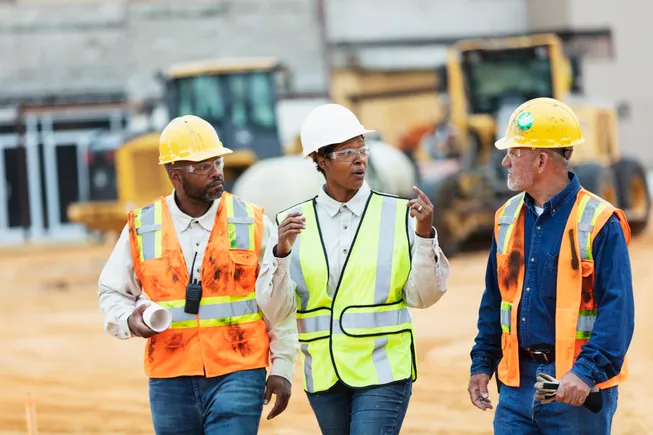The fourth annual Construction Inclusion Week, a grassroots event conceived by industry leaders to combat hate on jobsites, kicks off Monday, Oct. 14 amid a renewed push to draw workers from a variety of backgrounds into the sector.
With 41% of the current construction workforce planning to retire by 2031, creating an inclusive environment is essential to meet a surging demand for construction, architecture and engineering positions, according to a CIW news release.
“To continue to deliver on our promises to build the infrastructure and spaces our communities need, we must also deliver on our promise to offer an inclusive and welcoming workplace for the industry,” said Ray Sedey, CEO of St. Louis, Missouri-based McCarthy Building Cos., and chair of CIW 2024, in the release.
A pre-election bump
The week unfolds as bias-motivated actions, which can include racist or sexist graffiti in bathrooms, displays of nooses on jobsites or hazing of workers, among other exclusionary practices, have ticked up on jobsites recently.
Turner Construction, the industry’s largest firm by annual revenue, walks and monitors its projects daily for signs of hate. With 120,000 workers on its sites, its data provides a sample into what’s happening across the industry.
After declining earlier this year, bias-motivated events — mostly graffiti in bathrooms — rose slightly this summer, according to Chris McFadden, Turner spokesperson. McFadden said the uptick follows a trend the firm has noticed in previous presidential election years.
“Tensions rise and people find reasons to disagree,” he said. “I haven’t seen anything political in our [daily] reports, but there’s just an increased angst.”
Jobsite pause
On Oct. 8, a Gilbane-Turner JV shut down work at the Buffalo Bill’s new $1.4 billion stadium in Orchard Park, New York, after a worker discovered a rope tied in a way that could have been perceived as a noose, McFadden said.
The JV’s subsequent investigation determined it was actually a bowline knot — a common, non-slipping loop used to hoist loads — where excess line had been coiled back around the rope to keep it out of the way.
McFadden said even though the discovery was determined not to be a bias-motivated event, shutting down the job and talking to workers about making sure everyone felt welcome on the site was worth the work stoppage. “This was the right thing to do,” McFadden said.
Indeed, after spiking in the wake of George Floyd’s 2020 murder, data from both Turner and the Equal Employment Opportunity Commission show a drop and then flattening of these kinds of events in recent years.
Reports of suspected bias-motivated events on Turner jobsites
| 2020 | 2021 | 2022 | 2023 | 2024 | |
|---|---|---|---|---|---|
| # of reports | 80 | 88 | 42 | 45 | 29 |
| Monthly average | 13.3 | 7.3 | 3.5 | 3.8 | 3.2 |
SOURCE: Turner Construction. Note: 2020 events span July to December. 2024 totals are through Sept. 30.
Reports of nooses on US jobsites
| Fiscal Year | 2015 | 2016 | 2017 | 2018 | 2019 | 2020 | 2021 | 2022 | 2023 |
|---|---|---|---|---|---|---|---|---|---|
| # of charges | 8 | 8 | 5 | 7 | 7 | 15 | 7 | 7 | 7 |
SOURCE: Construction Dive analysis of Equal Employment Opportunity Commission data
DEI comes under fire
While the construction industry can count those trends as a positive, it may encounter more challenges going forward.
Following the Supreme Court’s 2023 ruling that barred affirmative action admission policies in higher education, a broader backlash has emerged against diversity, equity and inclusion initiatives across industries.
In construction, that backlash has taken the form of several challenges to workforce diversity goals on federal projects. For example, a federal judge partially blocked the Department of Transportation’s Disadvantaged Business Enterprise program, which has an aspirational goal for 10% of federal dollars going to minority- and women-owned businesses. In the September ruling, the judge said the program was likely unconstitutional.
That decision followed a similar ruling to the Small Business Administration’s 8a program, which has comparable objectives. In addition, following the Supreme Court’s ruling, 13 state attorneys general sent a letter to Fortune 100 CEOs, warning them that they would scrutinize DEI practices in hiring as potentially discriminatory.
Nonetheless, construction firms are gearing up for their own initiative to welcome more diverse workers into the industry. “This is how we will continue to attract and retain the best people for the work we do,” Sedey said in the release.

